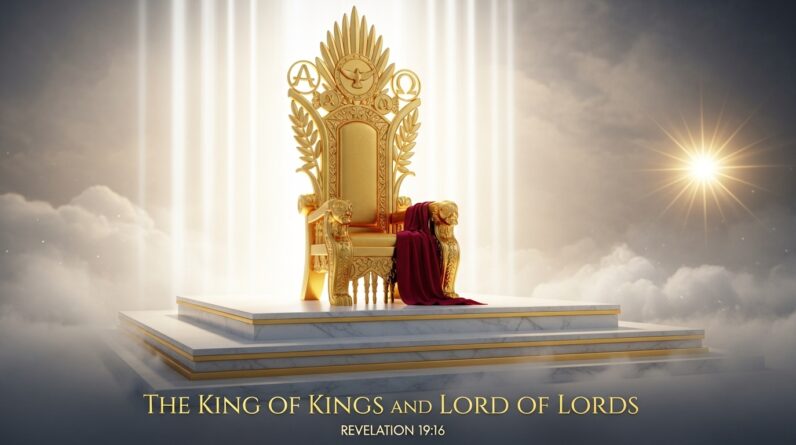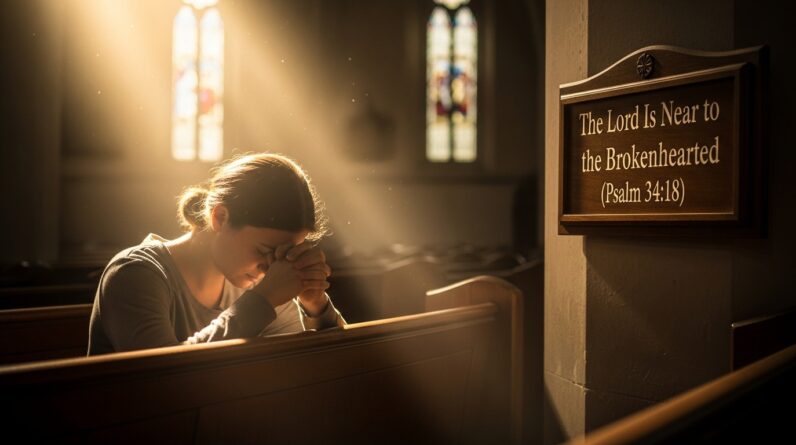When The Storm Becomes Your Pulpit (Mark 4:39–41)
When you read the account in Mark about Jesus calming the storm, you see more than a display of power; you see a pattern for how God uses chaos to preach His truth through you. The story in Mark 4:39-41 is a powerful picture that invites you to rethink the purpose of your trials. As you walk through these verses, you’ll discover how your storm can become your pulpit, how fear can be converted to testimony, and how Christ’s authority over wind and waves becomes the foundation for living courageously in faith. Read the passage here: Mark 4:39-41.
Open the Boat: The Scene and the Shock
You can imagine the scene: tired disciples, a small boat, a sudden storm that hurls water into the vessel, and panic rising as waves crash over the sides. In the midst of that chaos, you find Jesus—in the stern, asleep. That image alone should arrest you; it tells you who Jesus is in relation to the storms you face. Rather than beginning with theology, Mark begins with life—fear, danger, and the frailty of the human heart. This scene invites you first to recognize how real your fear is, and then to see the greater reality of Christ’s presence.
The Command: “Quiet! Be Still!” (Mark 4:39)
When Jesus wakes up, He speaks—two imperative words that stop the storm: “Quiet! Be still!” The command is not just to the wind and waves; it is also a declaration of His authority over the forces that threaten you. When you hear Him, you are being invited into the truth that no storm in your life is outside His jurisdiction. See the text here: Mark 4:39.
The Question: “Why Are You So Afraid?” (Mark 4:40)
After the miracle, Jesus turns to the disciples and asks a question that cuts to the heart: “Why are you so afraid? Do you still have no faith?” This isn’t meant to shame you; it’s meant to awaken you. He’s gently exposing fear’s root—distrust of His presence and power. When the waters subside, Jesus ministers not only to the physical calm but to the faith of those who witnessed His power. Read it here: Mark 4:40.
The Worship: “Who Is This?” (Mark 4:41)
The disciples’ response is worshipful astonishment: “Who is this? Even the wind and the waves obey him!” Their terror turns to worship, and in that transformation, you see the essence of how your storm can become your pulpit. Your testimony begins when fear meets the person of Jesus and ends in praise. See their response here: Mark 4:41.
The Storm and the Sermon: Why Your Trial Preaches
Your Troubles Are a Platform for the Gospel
When you go through hardship, you might feel isolated and ashamed; yet God often chooses those very moments to showcase His presence. Trials have a way of exposing the idols you cling to—security, reputation, control—and forcing you to point to Christ. In the early church and even today, testimony born in difficulty is among the most compelling forms of evangelism. Your pain gives you a pulpit that is honest and personal; it is a pulpit that the world watches.
Look at the Biblical Pattern
Scripture repeatedly turns suffering into proclamation. Consider John 16:33, where Jesus tells you that you will have trouble but also assures peace in Him. Paul writes that suffering produces perseverance, character, and hope (Romans 5:3-5). When you allow God to use your pain, He makes your life a living sermon that points to His saving work. These verses show that the pattern is not accidental; it’s providential.
The World Watches How You Respond
People are drawn not so much by what you say as by how you endure. When your faith stands firm in the storm, observers are more likely to ask, “Why are you able to be at peace?” or “Who gives you that hope?” That curiosity opens doors for you to share the Gospel. Your calm is an invitation; your testimony, a sermon.
What the Storm Reveals About Jesus
Authority Over Creation
One of the central truths of Mark 4:39-41 is Christ’s authority over creation. When He commands the wind and waves, they obey instantly. That authority declares His divinity and sufficiency to meet every need. The disciples asked, “Who is this?” because creation itself testified to His identity. When you face your storm, remember that the One who spoke to the winds still speaks today. If you want to revisit that moment, see the passage: Mark 4:39-41.
Presence in the Boat
Christ’s sleeping in the boat before He spoke is a profound picture: He is with you even when you don’t feel it. The storm doesn’t prove His absence; the storm proves His proximity. He is near in your panic, present in your sorrow, and powerful in your helplessness. This truth transforms how you interpret suffering—not as abandonment but as an opportunity to witness His faithfulness.
A Savior Who Calms More Than Weather
Jesus’ calming the storm points forward to His work of calming your restless heart, reconciling you with God, and giving peace that surpasses understanding. Verses like Philippians 4:6-7 invite you to bring anxiety to God in prayer and claim the peace He promises. The storm story teaches you that Jesus is not only Lord of nature but Lord of your inner life.

From Fear to Faith: How the Question Shapes You
“Why Are You So Afraid?”—An Invitation to Look Up
Jesus’ question invites you to evaluate where your fear is focused. Fear becomes faith when it is redirected from circumstances to Christ. Instead of asking, “How will I survive?” you begin asking, “Who is with me?” The disciples’ fear was not simply fear of drowning; it was a failure to remember who Jesus was. Your fear often hides a failure to remember God’s promises.
Faith Is Knowing What You Know to Be True
Faith is not merely hope; it’s a conviction anchored in the character of God. Hebrews defines faith as assurance of things hoped for and conviction of things not seen (Hebrews 11:1). When you recall who God is—His sovereignty, His goodness, His promises—you are equipped to face storms with steady trust. Practice remembering: rehearse what God has done in the past and what He has promised for the future.
The Role of Memory in Your Faith
Your memory of God’s faithfulness is a spiritual muscle. As you remember, your fear is weakened and faith is strengthened. Keep a journal of prayers answered, worship songs that sustained you, and Scriptures that comforted you. These serve as testimonies you can point to when the next storm comes and the waves seem overwhelming.
How to Let Your Storm Be Your Pulpit
Tell the Story Honestly
When you share your testimony, be honest about the fear and confusion you felt. People relate to authenticity far more than “Christian-speak.” Share the timeline: the problem, the emotions, the turning point, and the outcome. Your testimony should point to Jesus as the reason for hope. When you tell it plainly, your story becomes a sermon that others can hear and relate to.
Focus on the Redeemer, Not the Rescue
Your testimony should center on Christ, not merely on the resolution. Sometimes God does not remove the storm as quickly as you’d like, but He remains your Redeemer through it. Emphasize how Jesus changed you in the midst of suffering. That focus turns pain into proclamation and trial into living theology.
Use Scripture When You Speak
When you tell others, anchor your words in Scripture. Use the passages that carried you—perhaps Psalm 46:1-3 for God’s refuge, or Isaiah 43:2 for promises of presence in the flood. Scripture transforms personal testimony from a good story into an evangelistic message that points to God’s character and promises.
Practical Steps for Preaching Through Your Pain
- Pray for clarity and humility as you prepare to share.
- Write your testimony down so it has a clear beginning, middle, and end.
- Include the Gospel—what sin needed forgiveness, how Christ met that need, and how to respond.
- Invite listeners to respond with faith, not just sympathy.
These practical steps help you ensure that your storm truly becomes your pulpit and not merely a sorrowful tale.
Sermon Structure: Preaching From the Boat
Opening: Set the Scene
Begin by painting the picture—describe the storm, the fear, the darkness. Let your listeners feel the tension that you felt. Emotion draws the heart; facts shape the mind.
Transformation: Where Christ Intervenes
Next, show how Christ’s presence changed the situation. Even if the storm didn’t disappear, illustrate how your perspective did. That pivot is where the sermon becomes living proof.
Application: What This Means for the Hearer
Then make it practical: what does it mean for someone in the pew who is scared today? Give them steps to respond—prayer, scripture, community, confession. This application helps listeners see how to live out the lesson.
Invitation: Call to Faith
Finish with an invitation to follow Christ. The example of Mark’s disciples shows you that fear can lead to worship and worship to confession. Encourage people to respond to Jesus now, trusting Him in the boat.
Theologically Grounding Your Testimony
God’s Sovereignty and Human Suffering
Your sermon must balance two truths: God’s sovereignty and the reality of suffering. Romans 8:28 reassures you that God works all things for the good of those who love Him (Romans 8:28). That does not mean every difficulty is pleasant or that you can always see the good immediately, but it means God is active in your story and can use hardship for ultimate redemptive purposes.
The Cross and the Storm
Remember, Jesus Himself faced abandonment and sorrow. His calming of the storm foreshadows a deeper work—His victory over sin and death on the cross. When you preach from the boat, do not neglect the cross; it is the center of the Gospel and the reason storms have meaning in the first place.
Hope That Transcends Circumstance
Christian hope is not wishful thinking; it is anchored in the resurrection. When you testify to God’s faithfulness, you tap into a hope that transcends any temporal storm. Hebrews, epistles, Psalms—all point to a lasting hope through Christ. Anchor your sermon in that hope, and your audience will hear not only your pain but the promise.

When the Storm Doesn’t Immediately Subside
God’s Timing Is Not Your Timing
Sometimes God does not immediately calm the storm. You might pray and wait—days, months, even years—before relief comes. Those times are not failures of God’s power but opportunities to trust His timing. The life of Job, the endurance of Paul, and the trials of many saints show that waiting is itself a school of faith. Read Jesus’ promise about trouble and peace here: John 16:33.
Faithful Endurance as Witness
Endurance is a distinct witness. When you continue to worship while water laps at the boat, your perseverance becomes a sermon that the world notices. Romans and Hebrews both lift up endurance as evidence of faith; your patient, faithful trust can point others to God’s sustaining power.
The Role of the Church When the Storm Becomes Your Pulpit
Community Carries the Boat
You are not meant to face storms alone. The church is God’s design for mutual bearing of burdens. When you let the congregation see your vulnerability and faith, you allow the church to do what Christ intended—encourage, pray, and bear witness with you.
Training Others to Preach From Their Trials
As you model testimony from pain, you teach others to do the same. Encourage small groups to share honestly. Help people craft testimonies that point to Christ. When the church practices this, it creates a culture where suffering becomes a platform for proclamation rather than silence and shame.
Hope for the Doubter
Doubt Is Not Disqualification
If you wrestle with doubt, know that doubt does not disqualify you from God’s grace. Thomas doubted and yet was ministered to by Jesus. Your doubts, when brought honestly to Christ, can become the soil in which deeper faith grows. Bring your questions to Scripture and to prayer. Scriptures like Hebrews 11:1 and Philippians 4:6-7 can be anchors in that work.
Practical Steps for the Doubter
- Bring your doubts to a trusted Christian friend or pastor.
- Read Scripture with humility and curiosity.
- Pray for honest faith, not pretend certainty.
- Remember that faith grows by hearing the Word (Romans 10:17).
Stories of the Boat: Real-Life Testimonies
Ordinary People, Extraordinary Witness
You probably know someone whose life was transformed in difficulty—someone who lost a job, faced illness, or grieved a loved one, and yet became a clearer witness for Christ. These are the modern echoes of the disciples’ astonishment. Their testimony often reaches farther than polished sermons because it comes from lived experience.
How Your Story Can Help Others
When you share your testimony, you validate others’ pain and give them language for hope. You show them that God is not distant from suffering but is present and active. In churches and online communities, testimonies born in storms often encourage those who are still in the waves.
Practical Pastoral Words for Preachers
Prepare Hearts, Not Just Heads
If you preach this sermon from the pulpit, prepare your congregation to see their trials differently. Use pastoral warmth and Scripture. Invite responses of faith. Preach not merely to inform but to invite people into trusting action.
Use Visuals and Testimonies
Consider bringing testimonies, songs, and Scripture together to create a worshipful response. Let the congregation hear a living sermon in the life of someone who trusted God in a storm.
Equip for Action
Give practical steps for people to follow when their storms come: pray, read Scripture, find community, and share testimony. Equip them to make their trial a pulpit.
Final Encouragement: The Storm Becomes Your Pulpit
When you walk through your next storm, remember the boat, the sleeping Savior, the command, and the disciples’ wonder. You are not alone in your fear. Christ is with you, present and powerful, poised to turn your terror into testimony. Let your life speak of the One who calms storms and quiets the heart. When you let God use your suffering, your testimony preaches in a way no other sermon can—the lived sermon of a heart transformed by grace.
If you want to reflect on similar passages, see how Matthew and Luke record this event: Matthew 8:26-27 and Luke 8:24-25. Let those accounts deepen your appreciation for Christ’s authority and compassion.
When the Storm Becomes Your Pulpit sermon is not a mere slogan—it is a summons to see suffering as an opportunity. Embrace it with faith. Tell the story frankly. Center the Redeemer. Invite others to believe.
Explore More
For further reading and encouragement, check out these posts:
👉 7 Bible Verses About Faith in Hard Times
👉 Job’s Faith: What We Can Learn From His Trials
👉 How To Trust God When Everything Falls Apart
👉 Why God Allows Suffering – A Biblical Perspective
👉 Faith Over Fear: How To Stand Strong In Uncertain Seasons
👉 How To Encourage Someone Struggling With Their Faith
👉 5 Prayers for Strength When You’re Feeling Weak

📘 Jesus and the Woman Caught in Adultery – Grace and Mercy Over Judgement
A powerful retelling of John 8:1-11. This book brings to life the depth of forgiveness, mercy, and God’s unwavering love.
👉 Check it now on Amazon
As a ClickBank & Amazon Affiliate, I earn from qualifying purchases.
Acknowledgment: All Bible verses referenced in this article were accessed via Bible Gateway (or Bible Hub).
“Want to explore more? Check out our latest post on Why Jesus? and discover the life-changing truth of the Gospel!”








